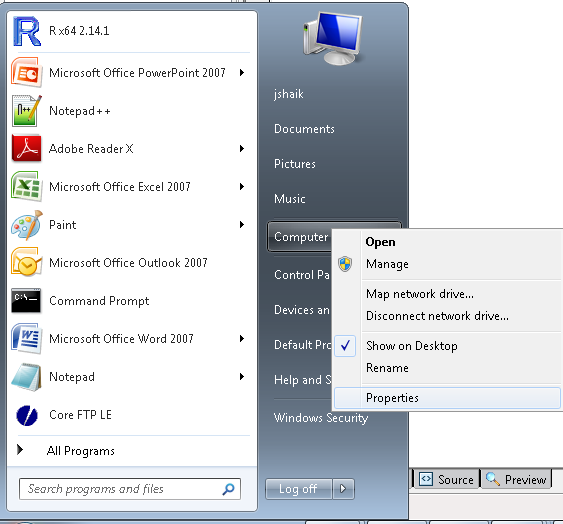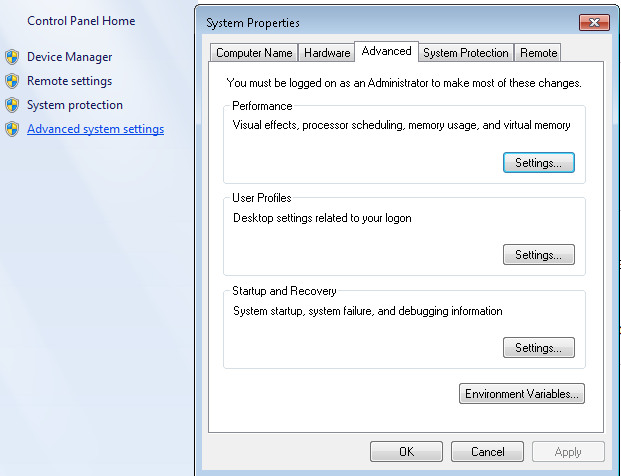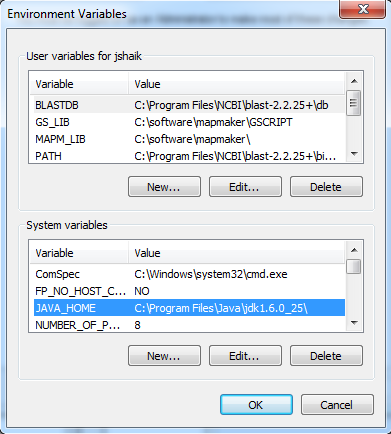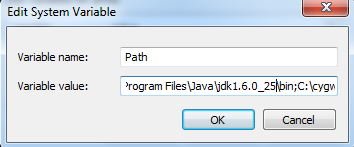 |
POPSICLE- a software suite to determine population structure and to establish genotype-phenotype associations using Next-generation sequencing data |  |
MAIN INDEX ANALYTICAL PIPELINE CONTACT SYSTEM REQUIREMENTS POPSICLE Package Download Manual pages in HTML format Used Case |
Windows Users: When
java is installed on your machine, the path variable names must all be
automatically set up. However for any reason they are not set up, then
check the following.
    If these entries do not exist, please create these environmental variables. Test if you can issue java commands from the command line by opening a command line and typing java -version Linux Users: Install the version of java supported by your linux version. Set the JAVA_HOME environmental variable to the java home directory and append java bin directory path to the path variable. You should now be able to run java from command line. For most linux machines, java is already installed. If the version is older than 1.5x, update your java to 1.5x or later. MAC Users: Java updates are done automatically. Make sure you have java 1.5 or later. Perform software update as necessary |
| CITATION: Jahangheer S. Shaik, Asis Khan and Michael E. Grigg, "POPSICLE: A Software Suite to Study Population Structure and Ancestral Determinants of Phenotypes using Whole genome Sequencing Data", submitted to PLoS special edition |